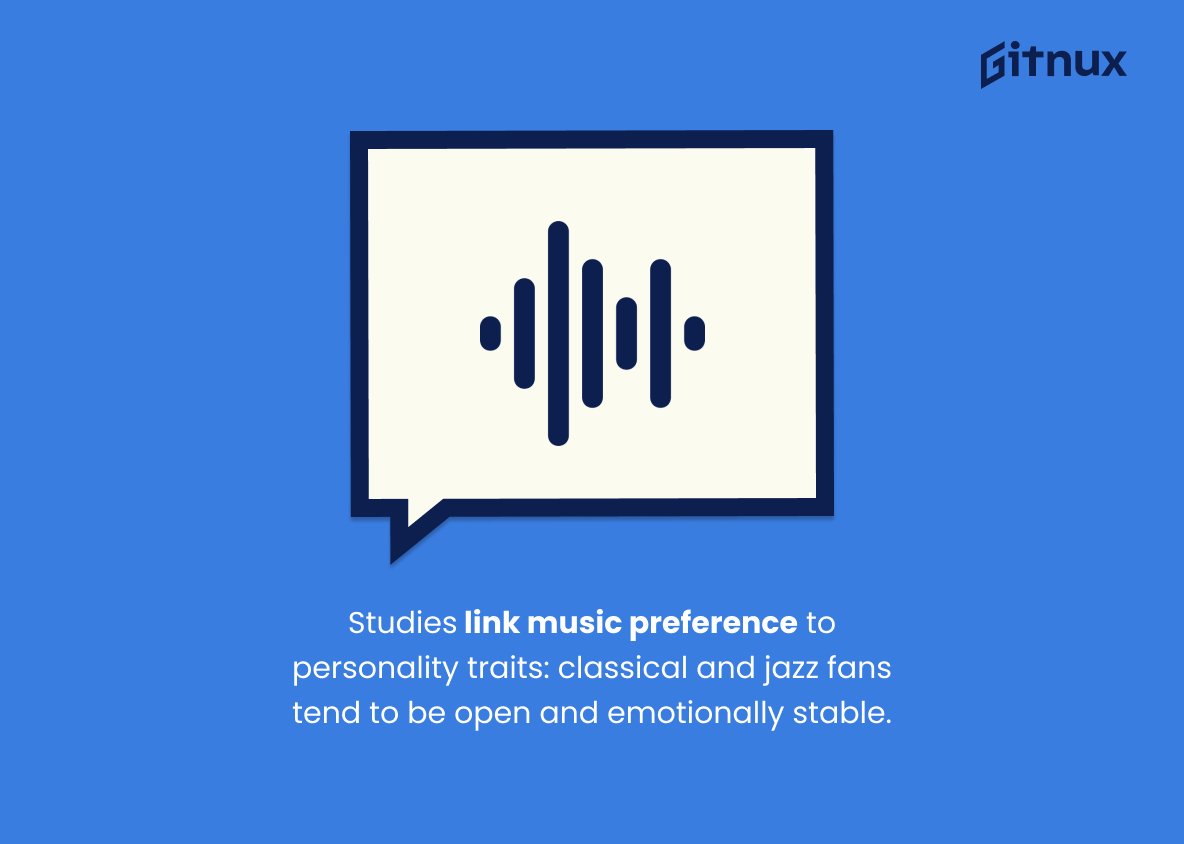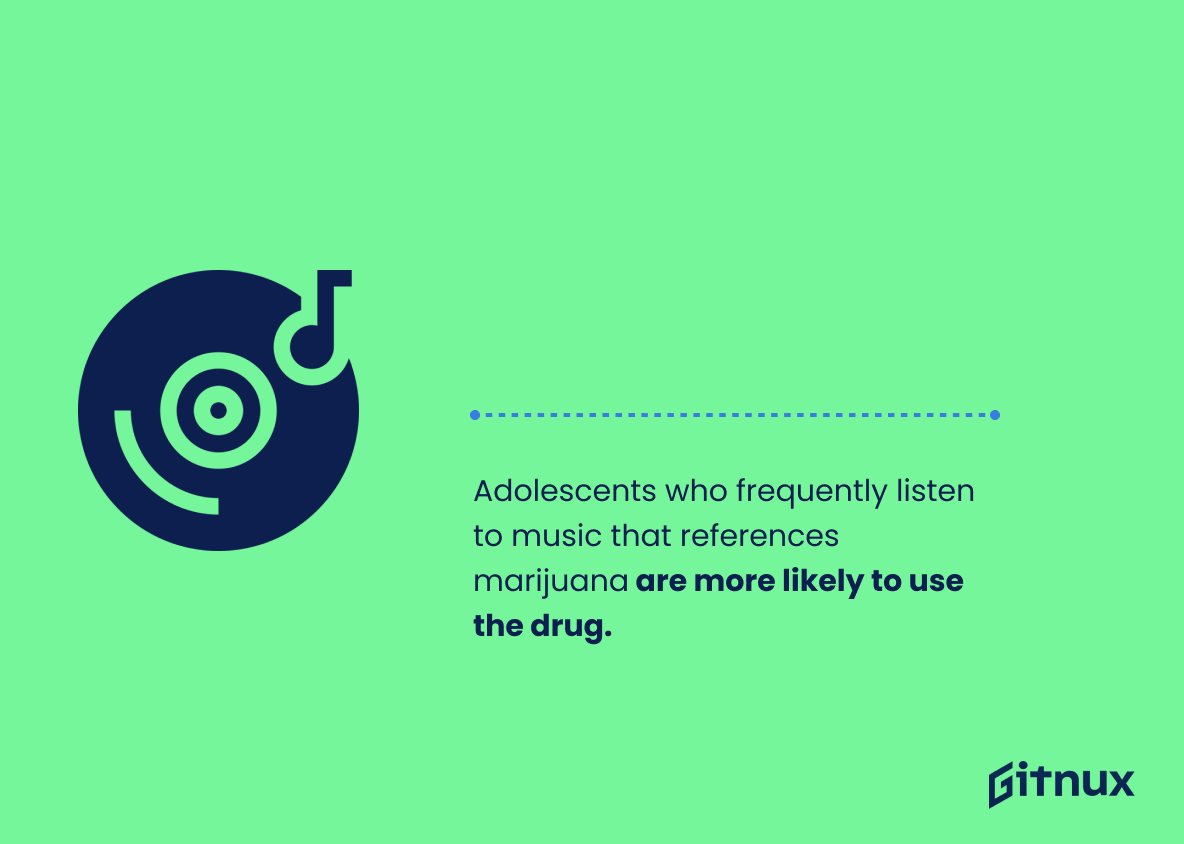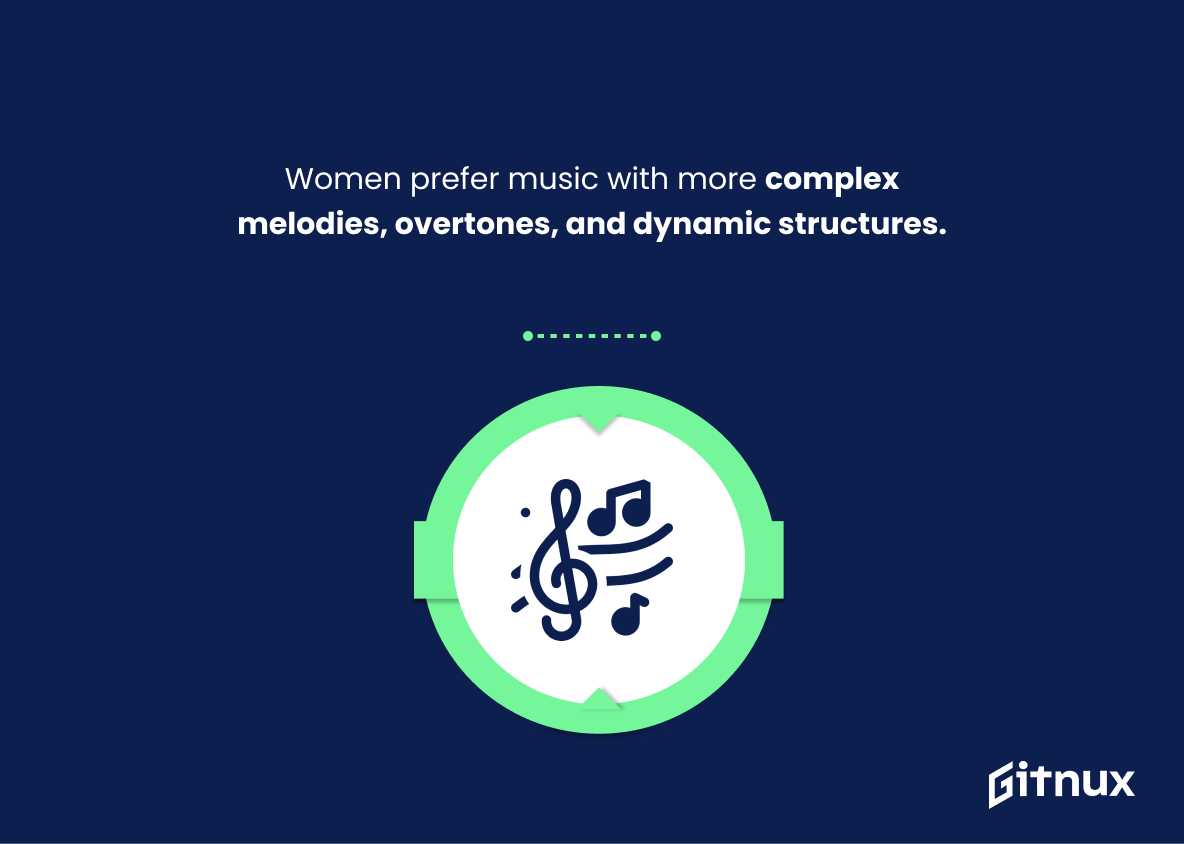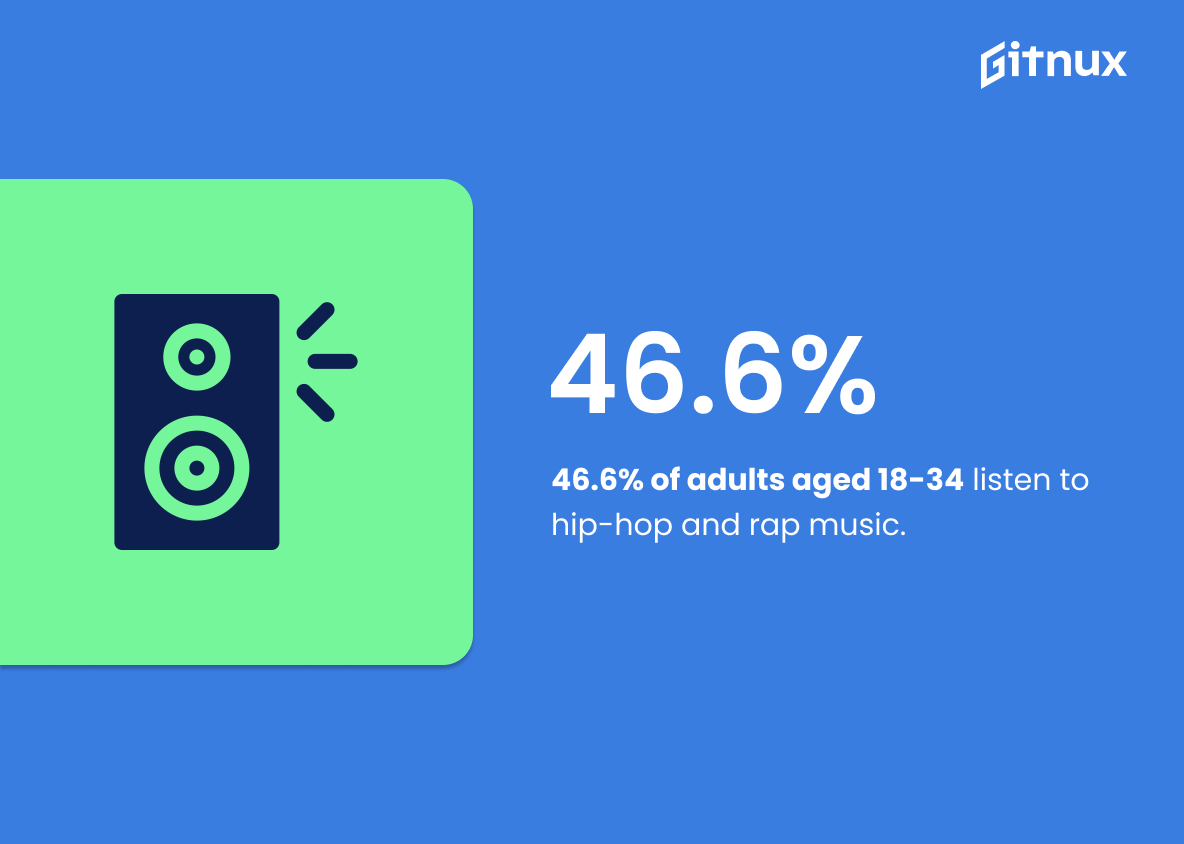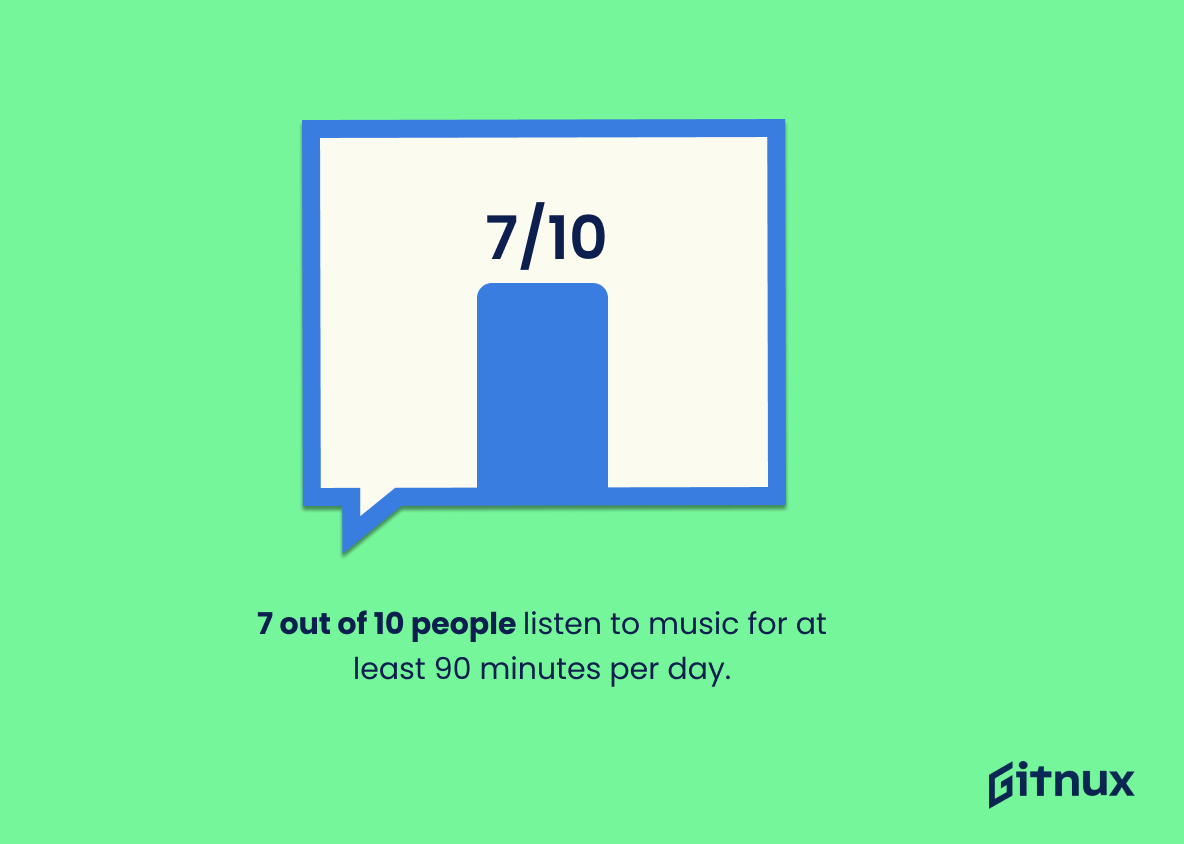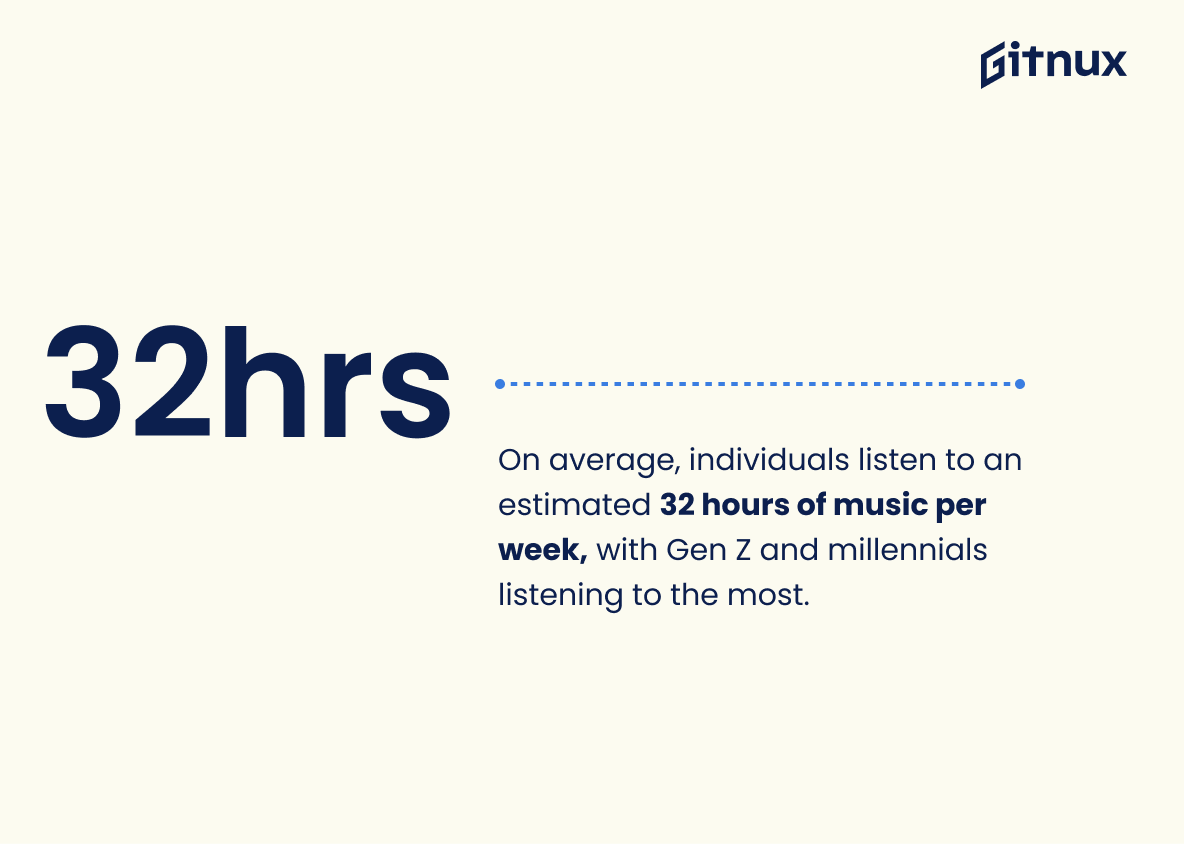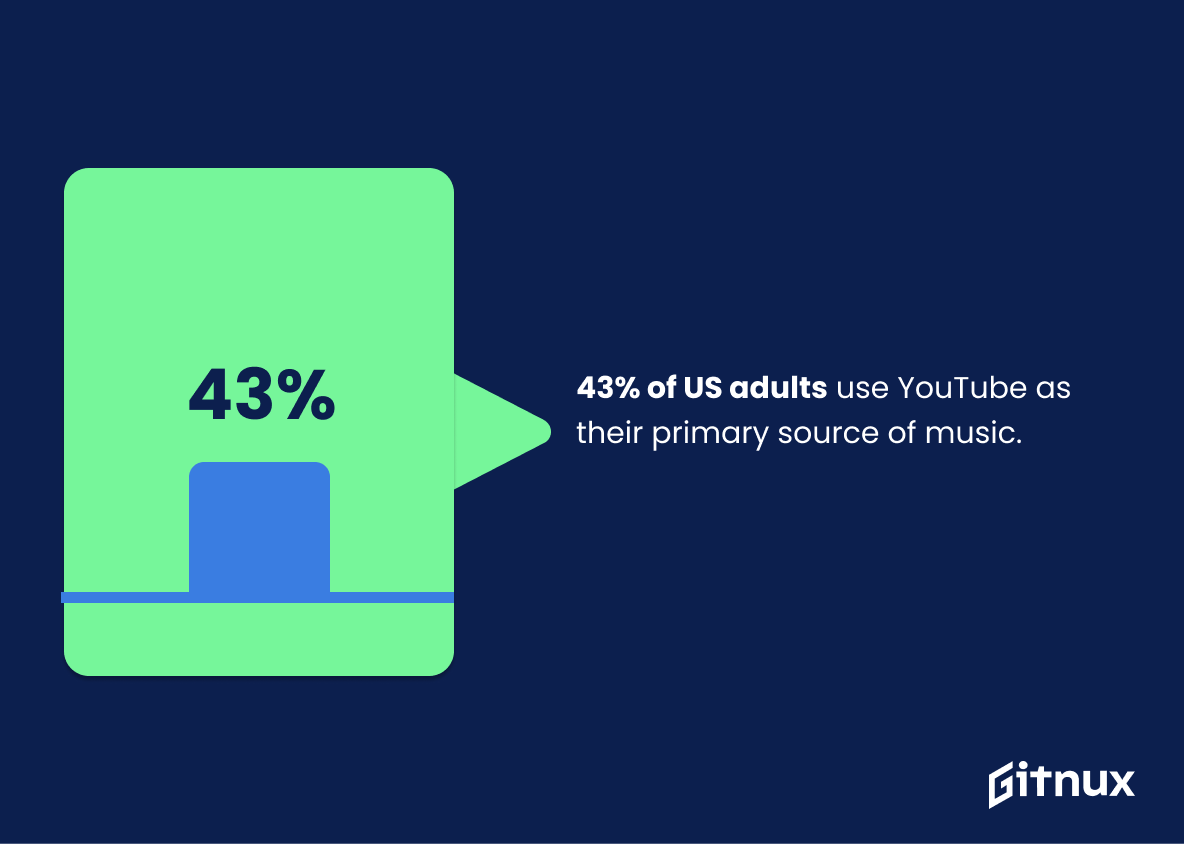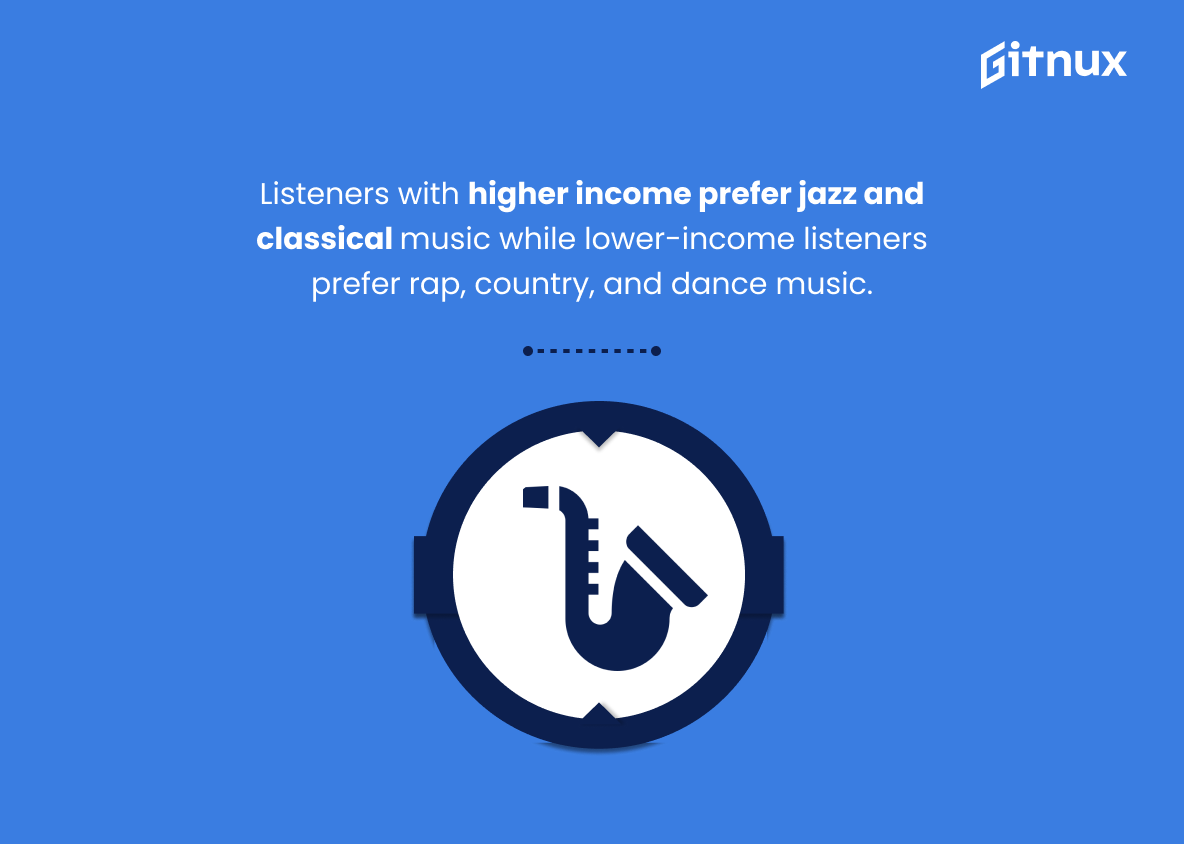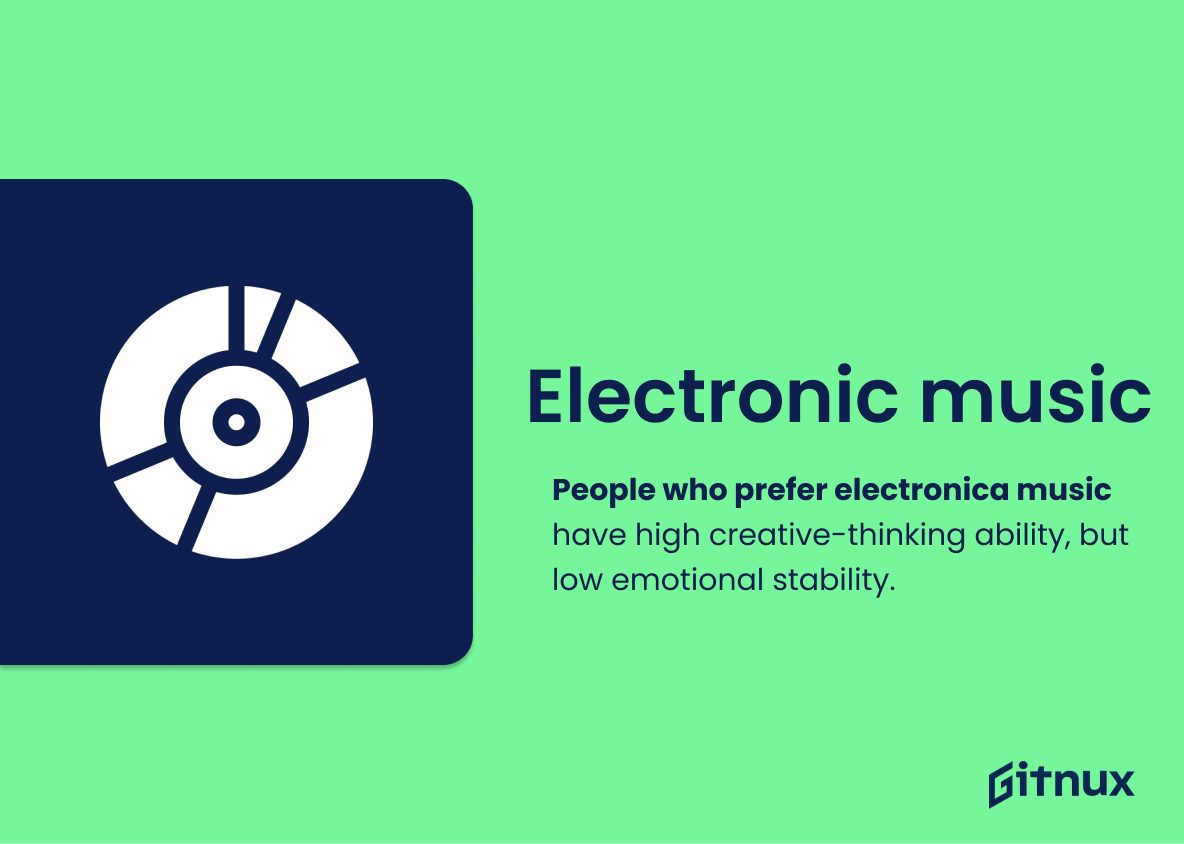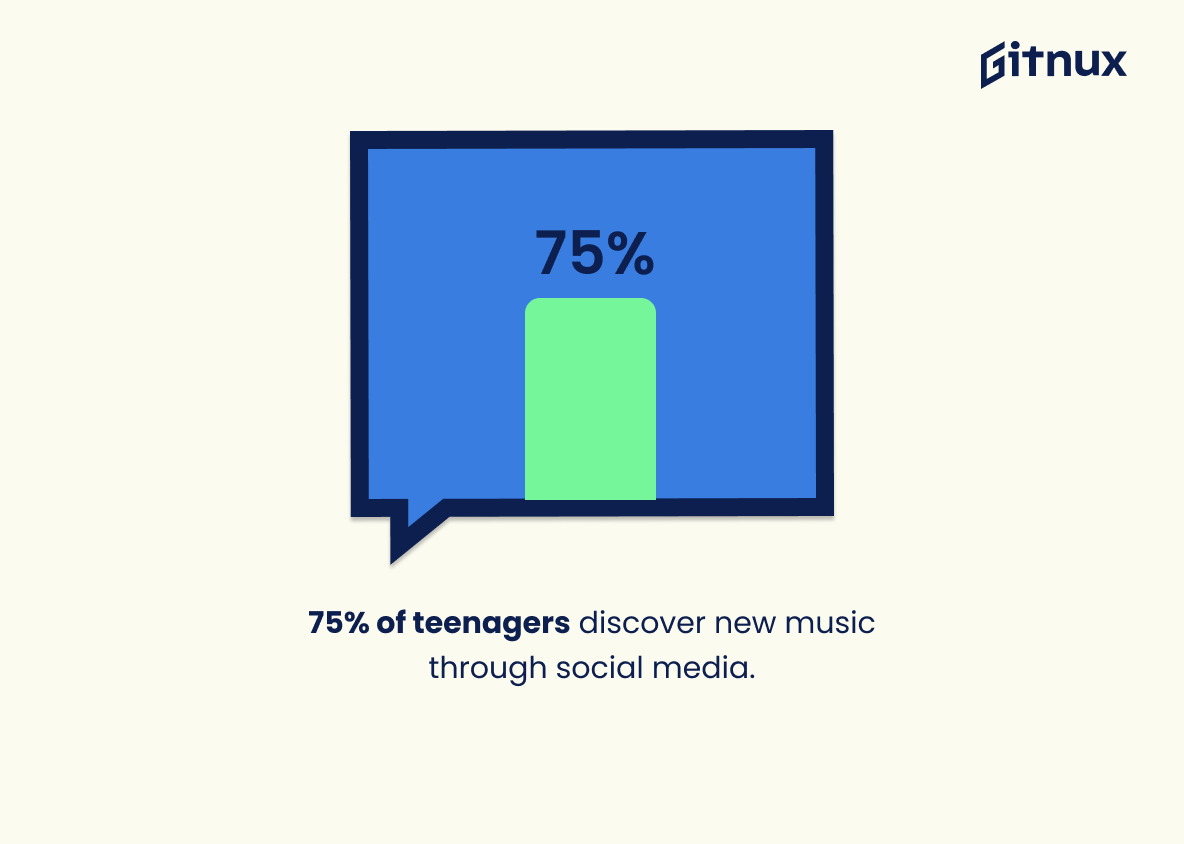Music preference is an interesting topic to explore, and there are many statistics that can help us understand the different music genres people prefer. From rock being the favorite genre of 24.7% of survey respondents in the United States to 66% of indie listeners having traits such as introversion, creativity, and intellectualism; from studies showing a link between political liberalism and slow intense deep music preferences to 122.2 million Americans listening to digital radio – these stats provide insight into how our musical tastes vary across age groups, genders, income levels etc., as well as what influences them. Additionally we also learn about correlations between personality traits and certain types of music or lyrics referencing marijuana leading adolescents towards drug use – all this data helps us better comprehend why we like what we do when it comes to tunes.
This statistic is significant in the context of the blog post about Music Preference Statistics as it provides insight into the preferences of the survey respondents. It indicates that a substantial portion of the surveyed population enjoys rock music, which could be used to inform decisions about what type of music to feature in the future.
In 2020, about 122.2 million people in the United States listened to digital radio.
This statistic is a testament to the growing popularity of digital radio, indicating that more and more people are turning to digital radio as their preferred method of listening to music. It is a clear indication that digital radio is becoming an increasingly popular choice for music lovers, and this is something that should be taken into account when discussing music preference statistics.
Music Preference Statistics Overview
62% of respondents aged 16-19 said that their music taste was influenced by their friends.
This statistic is significant in the context of a blog post about Music Preference Statistics because it highlights the importance of social influence in the formation of musical tastes. It suggests that the opinions of friends and peers can have a major impact on the music that young people choose to listen to. This is an important factor to consider when discussing the development of musical preferences.
Studies show a link between music preference and personality traits; people who prefer classical and jazz music tend to score high in openness and emotional stability.
This statistic is significant in the context of a blog post about Music Preference Statistics because it provides insight into the relationship between music preference and personality traits. It suggests that people who prefer classical and jazz music may have higher levels of openness and emotional stability, which could be useful information for readers looking to better understand the connection between music and personality.
Adolescents who frequently listen to music that references marijuana are more likely to use the drug.
This statistic is a powerful reminder of the influence that music can have on young people. It highlights the importance of being mindful of the type of music adolescents are exposed to, as it could potentially lead to the use of marijuana.
Pop music is the 2nd-most popular genre in the United States, with 14% of listeners identifying it as their favorite.
This statistic is significant in the context of a blog post about Music Preference Statistics as it demonstrates the widespread appeal of Pop music in the United States. With 14% of listeners identifying it as their favorite, Pop music is the second-most popular genre in the country, indicating that it is a major force in the music industry.
Women prefer music with more complex melodies, overtones, and dynamic structures.
This statistic is significant in the context of a blog post about Music Preference Statistics as it provides insight into the preferences of women when it comes to music. It suggests that women tend to gravitate towards music with intricate melodies, overtones, and dynamic structures, which can be used to inform the creation of music that appeals to female audiences.
46.6% of adults aged 18-34 listen to hip-hop and rap music.
This statistic is significant in the context of a blog post about Music Preference Statistics because it demonstrates the prevalence of hip-hop and rap music among adults aged 18-34. It shows that this genre of music is popular among this age group, and can be used to inform decisions about marketing and advertising strategies.
7 out of 10 people listen to music for at least 90 minutes per day.
This statistic is a powerful indicator of the importance of music in people’s lives. It shows that the majority of people dedicate a significant amount of time to listening to music each day, demonstrating the strong influence music has on people’s lives. This statistic is especially relevant to a blog post about Music Preference Statistics, as it provides insight into the amount of time people spend listening to music and the impact it has on their lives.
On average, individuals listen to an estimated 32 hours of music per week, with Gen Z and millennials listening to the most.
This statistic is a telling indication of the importance of music in the lives of Gen Z and millennials. It speaks to the power of music to bring people together and to provide a source of comfort and joy. It also highlights the diversity of music preferences among different generations, and the need for businesses to understand and cater to the needs of their target audiences.
43% of US adults use YouTube as their primary source of music.
This statistic is significant in the context of Music Preference Statistics as it demonstrates the prevalence of YouTube as a primary source of music for US adults. It highlights the impact of the platform on the music industry and how it has become a go-to source for music consumption.
Listeners with higher income prefer jazz and classical music while lower-income listeners prefer rap, country, and dance music.
This statistic is significant in understanding the relationship between income and music preference. It suggests that there is a correlation between the two, which could be used to inform marketing strategies and target audiences. Additionally, it could be used to explore the cultural and economic implications of music preference, and how it affects people’s lives.
People who prefer electronica music have high creative-thinking ability, but low emotional stability.
This statistic is significant in the context of a blog post about Music Preference Statistics because it suggests that there is a correlation between the type of music someone prefers and their cognitive and emotional traits. It implies that electronica music fans may have an advantage when it comes to creative thinking, but may be more prone to emotional instability. This could be useful information for readers looking to gain insight into the psychological effects of different types of music.
75% of teenagers discover new music through social media.
This statistic is significant in the context of Music Preference Statistics as it highlights the importance of social media in the discovery of new music. It demonstrates that the majority of teenagers are turning to social media to find new music, rather than traditional methods such as radio or word of mouth. This is indicative of the changing landscape of music consumption and the increasing influence of social media in the music industry.
Conclusion
From the statistics presented, it is clear that music preference varies greatly among different age groups and income levels. It also appears to be linked with personality traits such as openness, emotional stability, creativity and intellectualism.
Additionally, social media has become a major source of discovering new music for teenagers while streaming services have seen an increase in revenue over time. Finally, certain genres are more popular than others; hip-hop/R&B surpassed rock in 2017 to become the largest genre in the US according to Nielsen Music’s Year End Report.
References
0. – https://www.influencermarketinghub.com
1. – https://www.www.rollingstone.com
2. – https://www.www.hypebot.com
3. – https://www.www.researchgate.net
4. – https://www.medium.com
5. – https://www.www.statista.com
6. – https://www.www.frontiersin.org
7. – https://www.www.nielsen.com
8. – https://www.www.psychologicalscience.org
9. – https://www.www.ncbi.nlm.nih.gov

